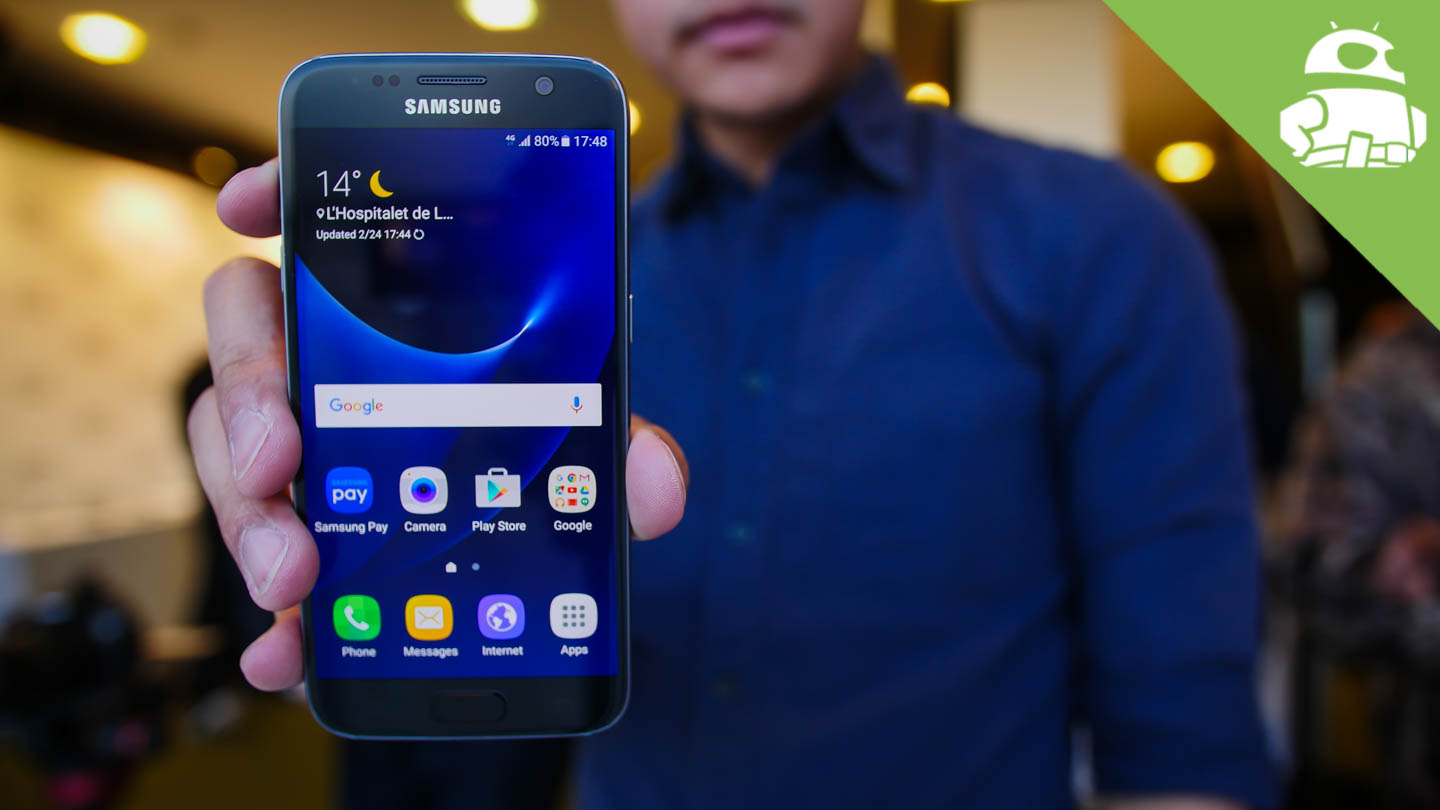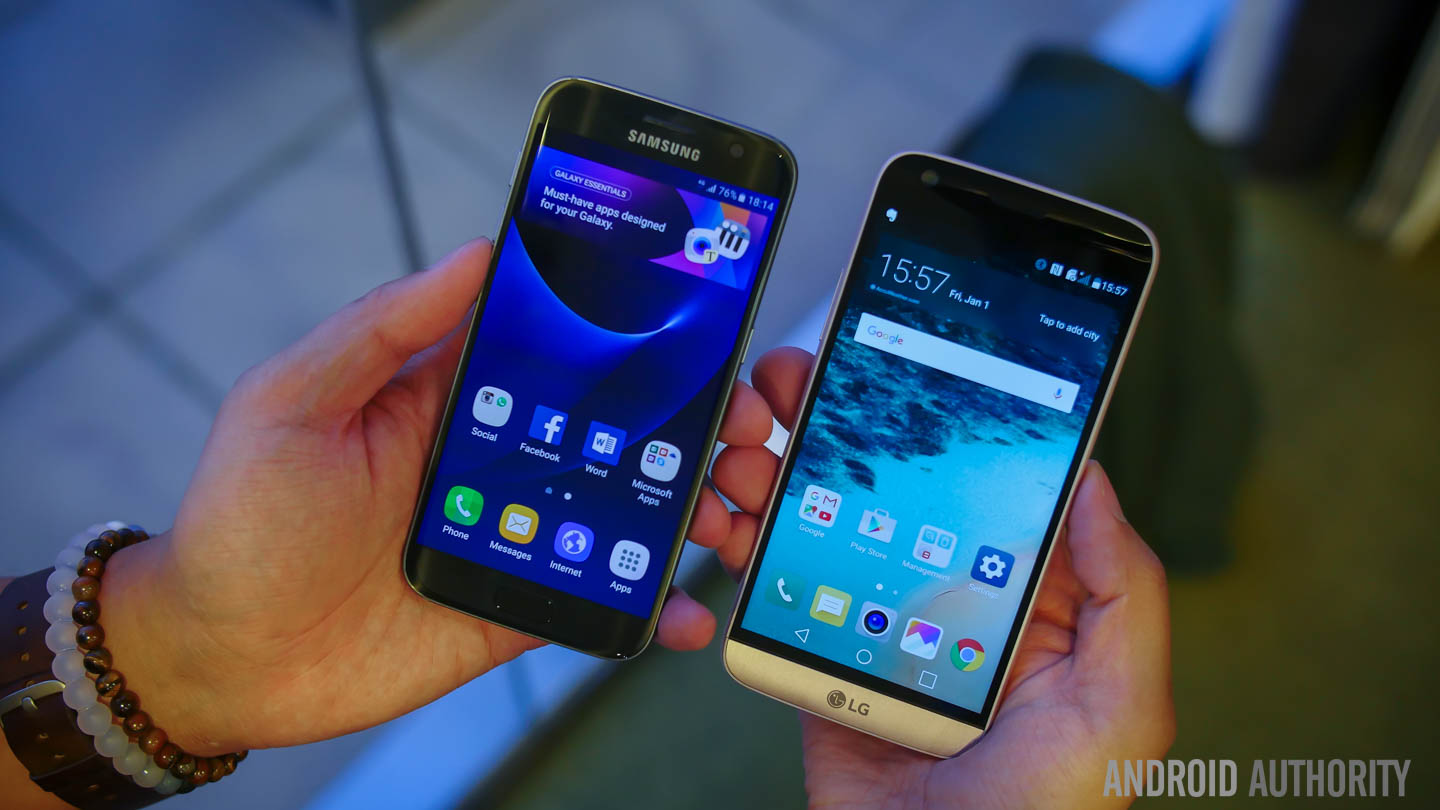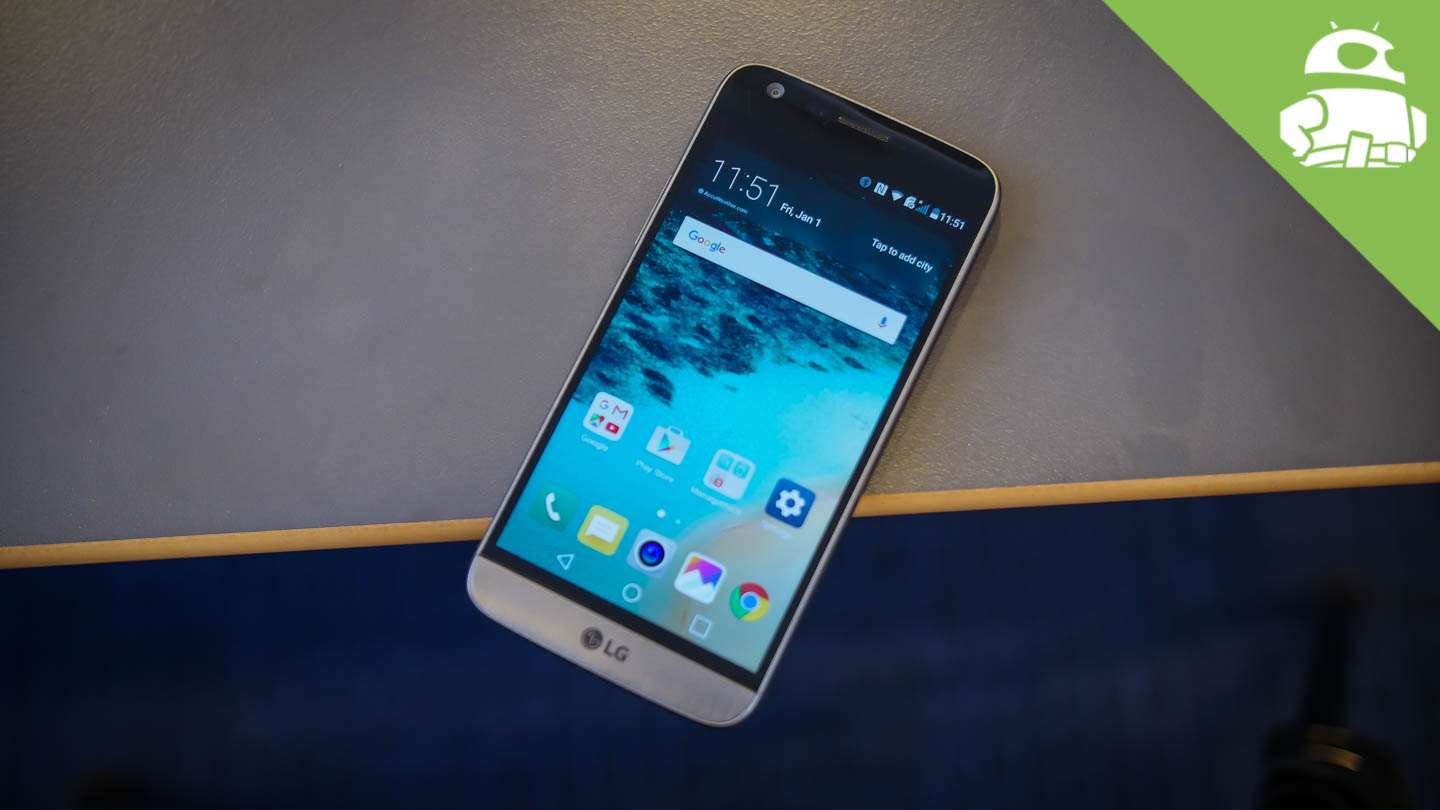Affiliate links on Android Authority may earn us a commission. Learn more.
Samsung Galaxy S7 hands-on and first impressions

We’re here at MWC 2016 where Samsung has just taken the wraps off the brand new Galaxy S7 and Galaxy S7 Edge. These phones might not stray too far from the design language found on the Galaxy S6 and S6 Edge from last year, though they’re certainly different in terms of specifications, features and user experience.
There’s certainly a lot to cover here, so let’s jump right in — here is our hands-on and first impressions with the Samsung Galaxy S7.

Design
Samsung didn't change much of the design, but that's okay
The device is comprised of an aluminum frame with glass front and back panels, which really helps bring a premium feel to the smartphone. This time around, though, Samsung decided to add a slight curve to the left and right edges on the back of the phone, similar to what we saw on the Galaxy Note 5 last year. This is a design choice we can get behind — the Galaxy S6 felt a little boxy, and these curved edges make the S7 much easier to hold and grip in one hand.
Also on the back we see a camera module in the center that looks very similar to the one found on the S6. The sensor on the S7, though, is almost completely flush with the rear panel. Samsung says the camera bump measures just .46mm tall, so we’re sure many users will be happy about this upgrade. Other than that, the back panel is very minimalistic and looks quite sleek.
Moving around to the front of the device, we can see that Samsung really hasn’t taken too many chances here. The Galaxy S7 looks very similar to many other Samsung devices, largely due to the physical home button sitting under the 5.1-inch display. Flanking the home button are capacitive recent applications and back buttons, set up in typical Samsung style. The bezels around the display looks all around smaller as well. You’ll still also find the Samsung logo sitting right above the display, and above that sits an earpiece with a front-facing camera module to the right.
Samsung is using Micro USB while the other big players have switched to USB Type-C
Samsung decided to bring back two big features to its Galaxy S line this year. The first of which is water and dust resistance. The S7 (and S7 Edge) comes with an IP68 rating, which means it can survive small splashes of water and a few tumbles without being rendered useless. The second, we’ll get to in a bit.
Display
Unsurprisingly, Samsung has decided to stick with a similar display size with its new flagship device. The Galaxy S7 sports a 5.1-inch Quad HD display of the Super AMOLED variety. So far, the display looks just as good (if not better than) every other high-end handset the company has produced.
One notable addition to the S7 is its always-on display. We’ve seen this feature from companies like Motorola and Google in the past, and now Samsung is finally catching on. Just like on the Moto X Pure Edition and recent Nexus devices, you’ll be able to see the time, date, calendar or a personalized image. Since this is a Super AMOLED panel only the pixels that need to light up are given power, which ultimately doesn’t take up too much battery life.
[related_videos align=”center” type=”custom” videos=”653171,643164,655757,651620″]
Performance & hardware
The Galaxy S7 will be powered by either a Samsung Exynos 8 Octa or Qualcomm Snapdragon 820 processor, depending on the market. Regardless, all versions are paired with 4GB RAM.
The company has also figured out a way to keep the device at a cool temperature — especially during gaming. There’s actually a copper pipe running next to the processor that contains water, which will run through and cool down the processor as it gets warm during gaming and other heavy tasks.
Samsung has brought back the microSD card slot
The Galaxy S7 comes with a pretty sizable 3000mAh battery, though it’s not user replaceable. This shouldn’t be too much of a surprise, as Samsung has been moving away from removable batteries ever since last year. Luckily the S7 still has Quick Charging capabilities and support for both PMA and Qi wireless charging standards. This will make it easy to find a place to charge your device if need be.
Cameras
The Samsung Galaxy S7 comes with a 12MP rear camera with an f/1.7 aperture lens, compared to the Galaxy S6’s 16MP sensor and f/1.9 aperture lens. The S7’s sensor also sports larger 1.4µm pixels, which should allow the camera to take in much more light (approximately 25% more, according to Samsung) than the S6’s camera.
Since we haven’t had a whole lot of time with these devices so far, we unfortunately weren’t able to take too many pictures to test out the cameras. If they’re anything like the cameras found on the S6 or Note 5, though, both cameras should perform quite well compared to the competition.
Software
The Galaxy S7 is running a heavily customized build of Android 6.0 Marshmallow with Samsung’s Touchwiz overlay on top. It doesn’t look too much different from the software on the Note 5 or the Galaxy S6, though it’s clear Samsung is working to keep the device performing as fast as possible.
Perhaps the biggest change in the S7’s software is a new experimental feature, found in the ‘Galaxy Labs’ section of the phone’s Settings menu, that allows you to turn off the app drawer altogether. We saw this on the LG G5 a bit earlier today as well, so it seems like this is somewhat of a trend when it comes to third-party manufacturers’ skins. We’ve also heard from a few sources that Android N, the next major version of Google’s OS, will ditch the app drawer, so perhaps this is just Samsung getting a head start on the big change.

Specs
| Samsung Galaxy S7 | Samsung Galaxy S7 Edge | |
|---|---|---|
Display | Samsung Galaxy S7 5.1-inch Super AMOLED display 2560 x 1440 resolution | Samsung Galaxy S7 Edge 5.5-inch Super AMOLED display 2560 x 1440 resolution |
Processor | Samsung Galaxy S7 US: Quad-core Qualcomm Snapdragon 820 Most other regions: Samsung Exynos 8 Octa | Samsung Galaxy S7 Edge US: Quad-core Qualcomm Snapdragon 820 Most other regions: Samsung Exynos 8 Octa |
RAM | Samsung Galaxy S7 4GB | Samsung Galaxy S7 Edge 4GB |
Storage | Samsung Galaxy S7 32GB | Samsung Galaxy S7 Edge 32GB |
MicroSD | Samsung Galaxy S7 Yes, up to 200GB (Uses SIM 2 slot) | Samsung Galaxy S7 Edge Yes, up to 200GB (Uses SIM 2 slot) |
Dust and water resistance | Samsung Galaxy S7 IP68 rating | Samsung Galaxy S7 Edge IP68 rating |
Cameras | Samsung Galaxy S7 12MP rear camera with f/1.7 aperture, 1.4-micron pixels, OIS 5MP front camera with f/1.7 aperture | Samsung Galaxy S7 Edge 12MP rear camera with f/1.7 aperture, 1.4-micron pixels, OIS 5MP front camera with f/1.7 aperture |
Battery | Samsung Galaxy S7 Non-removable 3000mAh battery | Samsung Galaxy S7 Edge Non-removable 3600mAh battery |
Fast charging | Samsung Galaxy S7 Yes | Samsung Galaxy S7 Edge Yes |
Wireless charging | Samsung Galaxy S7 Qi and PMA | Samsung Galaxy S7 Edge Qi and PMA |
Software | Samsung Galaxy S7 Android 6.0 Marshmallow | Samsung Galaxy S7 Edge Android 6.0 Marshmallow |
Dimensions | Samsung Galaxy S7 142.4 x 69.6 x 7.9mm, 152g | Samsung Galaxy S7 Edge 150.9 x 72.6 x 7.7mm, 157g |
Gallery
Wrapping up
So there you have it, our first look at the Samsung Galaxy S7! While it may not be a drastic change from the S6, we still think Samsung did a killer job this time around. What are your thoughts? When this device launches in the next few months, will you be picking one up for yourself? Be sure to let us know your thoughts in the comments!
Next: Samsung Galaxy S7 cases